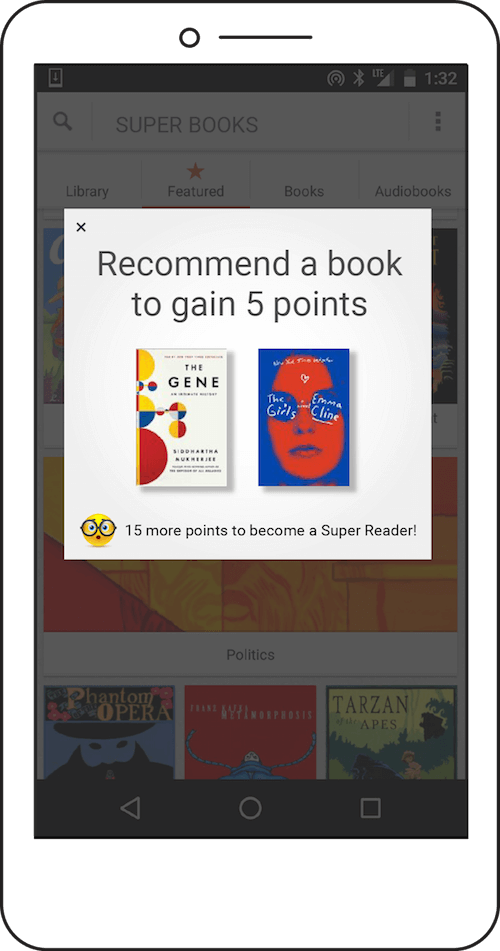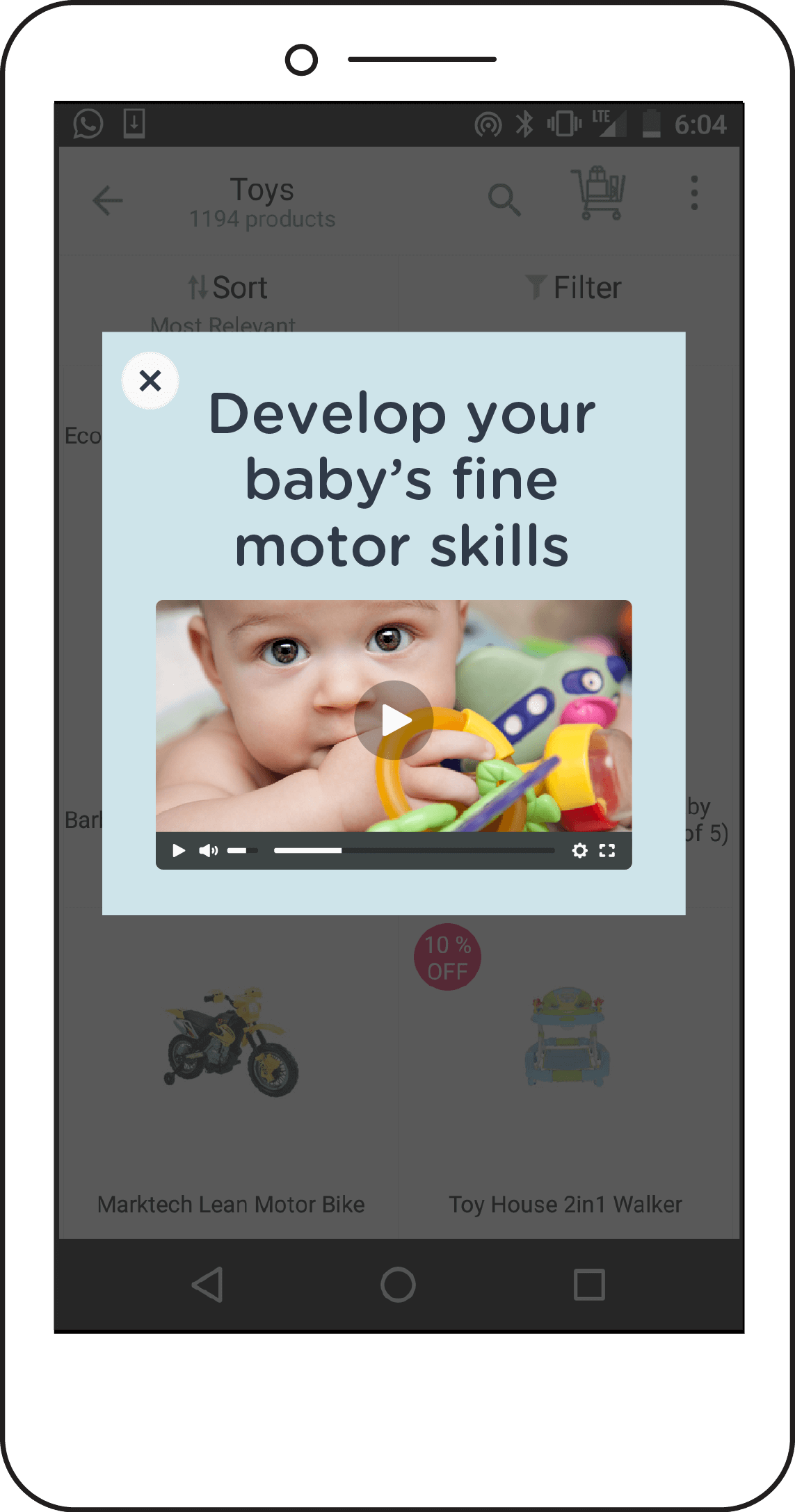Driving App Engagement With Personalization Techniques
Once upon a time, in the not-so-distant past, people considered websites to be a prime indication of how users’ attention was brief and unforgiving. Remember the dreaded bounce rate? Remember the numerous times you worried that your content and graphics might not be 100% clear to users? That was nothing. Compared to mobile, engaging users on the web is a piece of cake.
Researchers claim that we humans can no longer brag about being able to concentrate for a full 12 seconds on a coherent thought, thanks to the digitization of our lives. We now lose concentration after about 8 seconds, which, sadly, is 1 second less than the attention span of a goldfish. This is the attention-deficit state of mobile users that you need to overcome in order to successfully engage with them. Mobile users don’t just have brief attention spans — they also expect immediate satisfaction when interacting with your app, otherwise they might be quick to close or even uninstall it.
So, what should you do when tasked with “improving app engagement”? There are several actions you should take, but one of the most crucial is to get up close and personal with users. If you don’t segment and personalize your users’ journeys, then you should expect lower rates of conversion and retention.
Whether your product is a bookstore, baby supplies store or retail app, your users expect you to know who they are, what they want to get from your app and how they prefer to receive it. This means that only using your users’ first names in messages is not enough.
Here are the three fundamentals you should follow:
- Show that you understand them.
To become personal with your app’s users, you have to truly know who they are and what they want. Segment your audiences, understand their activity patterns in your app, and respond appropriately to their interests and preferences. Several tools on the market enable you to analyze your users’ in-app behavior, and you can also connect the app to your CRM for deeper segmentation. - Communicate with users at the right mobile moment.
Analyzing your users’ general usage and past behavior is just one step. You also have to track their real-time interaction with the app and act upon it. People open your app to perform a particular action. Make sure to interact with them using mobile-engagement features such as surveys, messages and banners in a way that respects the reason they opened your app in the first place and that adds value to what they were planning to do. - Provide meaningful content.
Mobile engagement needs to be done in context. You need to know the point a user has reached in their journey, their demographics, their physical location, and information about their overall app usage. All of these should be taken into account for optimal personalization.
To better explain these three points, here are five examples of using personalization to drive mobile engagement.
Gamified In-App Messages
The first step towards personalization is to segment your users. Collecting data on users’ past interactions with your app will enable you to segment them by how active they are (visit frequency, time in app, actual usage, etc.).
Each and every app has its power users — the people who are most active and loyal. According to Capgemini Consulting, a customer who is loyal to a brand delivers a 23% premium in share of wallet, revenue and profitability compared to the average customer. Loyal users should receive a totally different type of in-app message than less active or dormant users, who might feel harassed by gamified messages.
At the right time and in the relevant context, power users should receive in-app messages that are gamified and that drive them to perform a certain action.
In the example below, a frequent user of a bookstore app is asked to recommend a book to a friend to gain 15 points to become a “Super Reader.” This is a great example of how gamified messages give users the feeling that they are an integral part of your app’s community. In addition, they will be thrilled to be recognized for their commitment to your app and to know that you appreciate them.
When users feel this way, they are more likely to rate the app or share it with their friends and connections, helping to create a community of readers who use the app.

Gamified in-app messages can be as simple as this one or more complex. You might choose to give your power users credits, points, access to special features and offers, and more.
Whatever type of gamified in-app message you choose, make it fun and make it personal.
Video Messages
Let’s say you want to drive users to learn more about one of your products and to purchase it. Understanding how the product works and its value is a strong motivator for consumers to purchase it, and even to learn about more products that they might purchase in the future.
If you’ve already used banners or in-app messages (triggered at the right time, of course) to promote this particular product, but your users aren’t converting as much as you’d like, then a video could be a great way to improve your conversion rates. In the example below, an explainer video is triggered when users who have already engaged with items such as baby food and baby clothes in past sessions are now visiting your toys section for the first time. The video drives purchasing intent by explaining how the baby toy would nurture their baby’s development.

Combining the right video with the right mobile moment could lead to better engagement results.
Don’t forget, too, that video is increasingly popular among mobile users. According to an IAB study, video is on the rise, with 35% of respondents viewing content on mobile devices (in the US, it’s almost 50%). Using mobile video messages is a great way to communicate with users to convey a message that requires a more detailed explanation, or to deliver an emotional message that connects retail buyers to your brand.
Reminder Push Notifications
It is not uncommon for a user to add items to their shopping cart but then suddenly not continue with the purchasing process. You want the user to complete the action as soon as possible, though. Push notifications are the ideal solution in this type of scenario, because they can be highly personalized and can contain a deep link that takes the user to exactly where they left off. Push notifications without personalization can drive users insane, whereas one small personalized message — triggered at the right mobile moment — can push (pun intended) users in the right direction.
When possible, add new information to push notifications that can help drive conversion decisions. For example, receiving an offer for free shipping after having added products to their shopping cart could persuade a user to take the next step and finalize the order. Just like the gamification example in our first point, push notifications serve to recognize and reward past activity in the app.

Use Surveys To Ask And Respond To User Feedback
You can’t only talk to your users; you need to listen, too. Whereas tracking their “digital body language” can help you understand what users feel about your app, surveys are more about listening to them and taking the conversation to the next level.
An important step when using surveys is to provide each user with different feedback (such as messages, a secondary survey screen, a video, etc.) and not to use identical “thank you” messages, which are sometimes a turn-off.
In the example below, a user who says that they wouldn’t likely return to a hotel is shown another screen that asks them their main reason for not returning. Meanwhile, those who respond very positively are asked whether they would like to write a short review.

A combo survey personalizes the responses of users and drives them to complete the proper action in the right mobile moment.
Offer Coupons Based On The User’s Journey And Purchasing History
Coupons have a better chance of being redeemed if they are relevant to the customer’s purchasing history. But you also need to consider the right moment to present a coupon. Choose a time when the user is most likely to be interested in what the coupon offers.
Let’s say you have a customer who has looked at a particular pair of shoes several times throughout the day but has yet to purchase them. To drive the user to purchase, you could offer a time-limited coupon of 20% off the item the next time they visit the screen.
Targeting the right users at the right moment is key to increasing your conversion rate.

Understanding the individual user’s journey and how they are using the app overall is key to personalizing your mobile app experience. Mobile users have high expectations of the mobile experience and brief attention spans, so careful personalization and in-context awareness are crucial for effective communication and engagement with them.
Further Reading
- Privacy Guidelines For Designing Personalization
- Real-Time Data And A More Personalized Web
- How Artificial Intelligence Is Changing Design
- Applications Of Machine Learning For Designers







